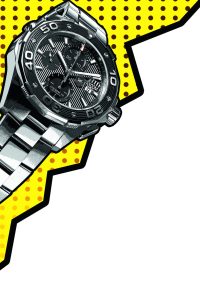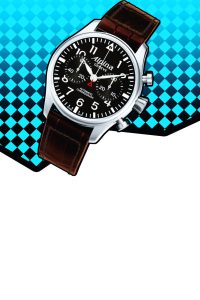Frederique Constant
Affordable Swiss Luxury
Swiss Watchmakers put their best into creating timepieces of excellent quality and value
A Matter of Perception
Though Switzerland is often seen as a bastion of luxury watchmaking, with premium brands producing timepieces that cost as much, if not more, than automobiles, that is not to say that there is a dearth of affordable Swiss watches; or that they are necessarily inferior to their heirloom-price cousins in material ways. Take Tissot for example. As brand director Kathrin Buegl notes, Tissot is able to leverage its membership within the giant Swatch Group to access manufacturing know-how, materials (316L stainless steel, titanium, PVD) and parts (Swatch owns ETA, the world’s largest manufacturer of Swiss movements) “to provide the end consumer with the highest quality of watches in terms of materials and movements used, for a great price.”
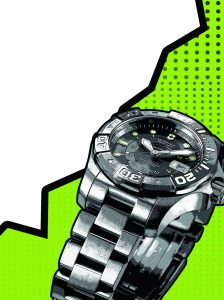
At Victorinox, innovation comes in the form of design and new technology to provide added value to its watches
Says Alex Bennouna, CEO of Victorinox’s watch division, “Luxury has come to be associated somewhat with the glittery and frivolous. But the recession has obviously allowed the market to evolve a customer who is more value-aware, who wants an affordable luxury.”
The rise in value-awareness has grown not only with the recession, but, argues Jack Heuer, chairman of TAG Heuer, with a more educated consumer — watch buyers increasingly know what they are looking at, and have the power of the Internet to talk to fellow shoppers before getting out their wallet. Certainly, a number of brands, from TAG Heuer to Oris, Maurice Lacroix to Frédérique Constant and Longines, to name just a few, have upped their game to provide the kind of product that any collector might be impressed by.
Quality Advances
According to Heuer, advances in manufacturing technologies and materials have risen dramatically over recent years, “allowing for operation with much closer tolerances, and so, leading to much higher standards for mechanical watches generally,” he says. “Go into a manufacture now and there’s no oil. It’s all computers.”
But few customers might also consider, for example, that one reason why Oris — which saw record sales in several markets last year — has won a reputation for offering some of the best-value products is a consequence largely of its lean company structure: it has low staffing numbers (management and design comprises just five people) and, since 1983, has been independent, both of which factors “allow for a much more instinctive response to design,” argues the brand’s regional director Rolf Studer. “Our small approach also means customers know they are paying just for the product, not for George Clooney’s villa. It’s why, when we launched our new Oris Col Moschin diving watch, we didn’t front it by an actor who looks like a secret agent, but actually had it trialled by Italian special forces.”
Oris watches even come with extra bracelet links and a spare clasp, and, should a watchmaker service one, he will find blind screws in the movement holders ready, if required. Similarly, with the need to match the functionality of its famed Swiss Army knife, Victorinox claims to operate a testing program for its watches that, says Bennouna, is “more typical of brands twice the price”. Its independent homologation lab, opened eight years ago, performs extensive environmental, metallographic and material, wear and mechanical tests.
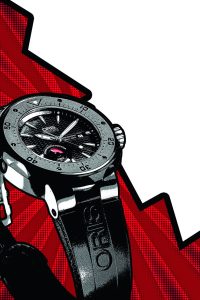
Oris’ Col Moschin diving watch was tested on the field by the Italian special forces, demonstrating its quality and fantastic value
Likewise, Alpina is also revisiting its aviation heritage with a new line of watches, the Startimer Pilot, that is attractive in looks as well as function and pricing. The collection is based on Alpina watches from the 1920s, and boasts a number of models ranging from a basic three-hand model starting from US$495. Other models include an in-house automatic caliber as well as regulator displays and a chronograph version. For innovation, Alpina created a new leather strap design with a clasp that is secured from the front of the wrist for added comfort.
Brand Credibility
For some watches, their value also consists of impressive heritage: last year’s 150th birthday for TAG Heuer (a record year in sales terms), or Omega’s bonanza auction of vintage pieces, were both timely reminders that affordability need not discount credibility. And some brands simply have icons of horological design or watchmaking history in their collections that are hard to ignore: TAG Heuer’s Monaco and Carrera, Oris’ signature Big Crown Pointer Date pieces, and Omega’s Speedmaster, for example.
“Many brands hope to have a watch icon in time, but few brands actually do have one, and that has to put a brand that isn’t operating in the €50,000 or €100,000 market on even the most serious of collectors’ radar,” argues Stephen Urquhart, president of Omega, which has doubled its average price to around $7,000 over the last year simply as a consequence of moves toward increased quality.
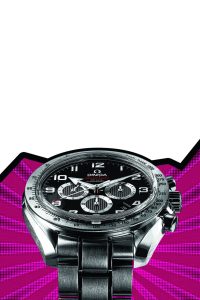
The Omega Speedmaster, an incredible icon in watchmaking which still remains an accessible timepiece
Design Innovation
The more affordable brands are no slouches when it comes to new designs either: Frédérique Constant — which has conducted research that suggests 90 per cent of watch sales are determined by whether the shopper likes the look of the product, closely followed by price — has a policy of employing and training younger, more design-progressive watchmakers (who are allowed to complete entire watches rather than only in part, as is standard) and produces an unusually high number of prototypes each season before deciding which to take to market.
It appears to pay off: in 2009, sales increased year-on-year just 12 per cent; last year, they shot up 45 per cent, “because people, and even those people who can buy whatever they like, are fed up with overspending,” reckons the brand’s founder, Peter Stas. “I think collectors now see buying just such more affordable, quality pieces that still offer appealing design or great movements as a way of growing their collections faster.”
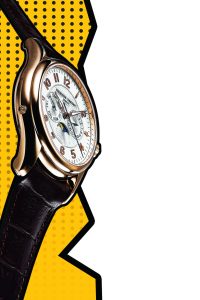
Frédérique Constant has in its collection a range of timepieces with impressive movements that still remain affordable to the customer
Technical Innovation
While watch brands on the lower price brackets heavily rely on ETA movements (which are being improved on all the time, despite lacking exclusivity) they have also invested in areas typically in the realm of luxury watchmaking: innovation, in-house manufacture, or benchmark movements. Victorinox, for example, has developed LED lighting, compass functionality and its widely imitated “Black Ice” PVD finishing. TAG Heuer may have invested €20 million to create its own chronograph movement, and made only some 100 pieces of its V4 — “selling enough just to make back the amount that had been spent on research and development to make it possible,” says Heuer — but the technology filters down to the likes of its entry-level, €1,200 F1 models.
Frédérique Constant’s own manufacture in Geneva can offer a tourbillon (at around €35,000, one of the most affordable on the market) with a patented weight-balancing system for the cage, and this year, will launch three new movements.
“We’re an ‘industrial brand’, of course, and have to make and sell 2,000 watches every day,” adds Omega’s Urquhart. “And yet, with the likes of our Co-Axial escapement, that gives us products that, in technical advancement and performance terms at least, put us on a par with any in the business.”
Legitimacy and Pricing
“Some companies continue to try to get more than [what] their watches are, in themselves, worth because they have the brand heritage that might allow that and might justify that, as with the very old, established companies, rather than those that have come to the industry rather late, and even if some of them make good watches,” Heuer says. “But there are not many brands with that legitimacy anymore, which has made collectors very aware of the product itself again. The bottom line is that, whatever the price, the market has decided it doesn’t want to get screwed.”
Tipping Point?
Might this heady cocktail of watch-awareness, recessionary pressure, information access, improved manufacturing standards and the readiness for honest assessment of product create a genuine, permanent shift in how the industry operates? Sandro Reginelli, product and marketing director of Maurice Lacroix — at just 36 years old, not a brand that can coast on heritage, despite having its own manufacture collection — thinks it could.
“There has been a tradition in the watch industry of developing a new product and hoping that there’s a consumer for it,” Reginelli says. “It’s not very efficient. The likes of the car industry thinks of the consumer first — what do they want to spend [on]? And how do we give them as much as we can for that price? Watch companies need to go right back to the start of the design process and, as with the car industry, work out how production methods can be refined to allow for even more competitive pricing than usual. That’s when you get real value. That’s what collectors, even those after a wonderful grande complication from one of the big boys, are looking for now.”
Adapted from an article by Josh Sims in REVOLUTION’s archives.




